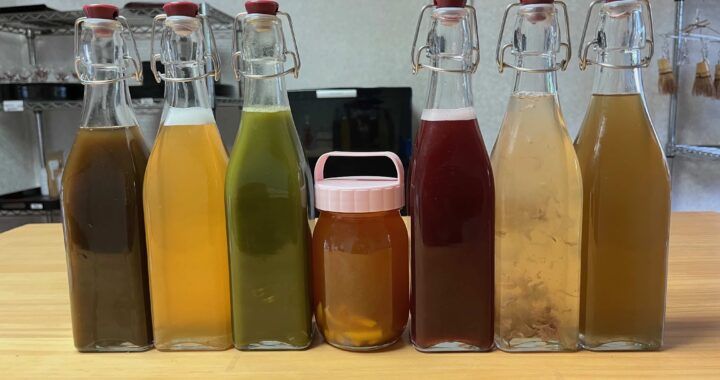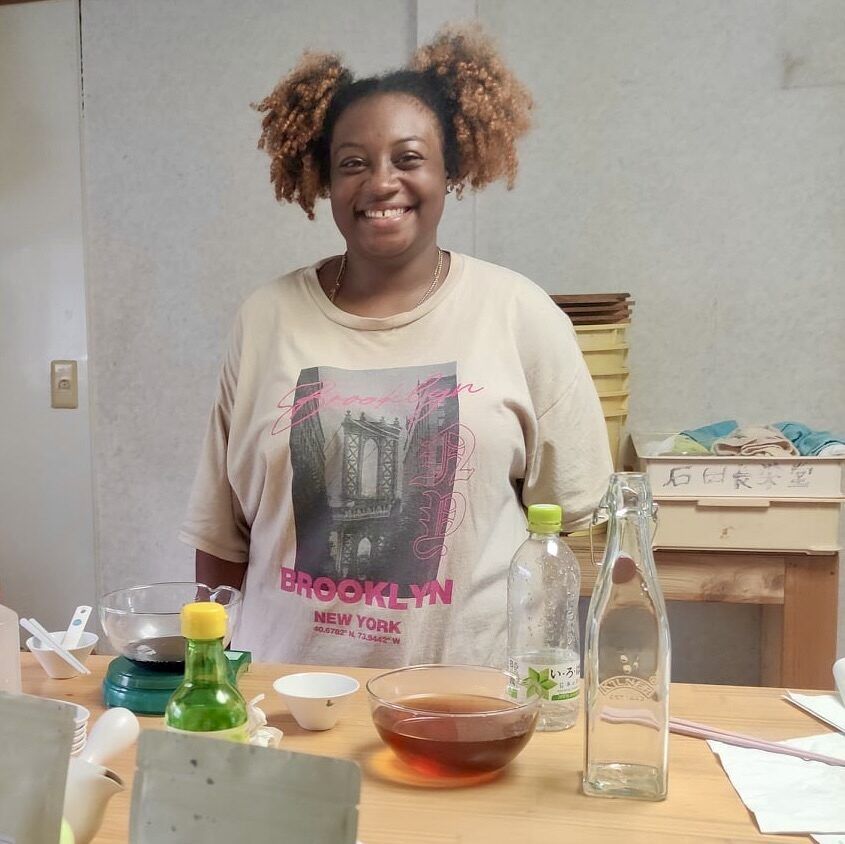
Hello, to all those who love tea and also those who also happen to love soda. I am Jocelyn intern #176 at Obubu studying Biological Systems Engineering specializing in Food Engineering in university and while being here at Obubu I found a new love for tea and hope to share with you all a fun creation of mine. 😊
I have had a sweet spot for tea for some time now and as the summer was starting I wanted to have something that was refreshing during the hot days here at Obubu. I love to drink carbonated drinks and decided to combine my love for tea and carbonated drinks to make tea soda.
I began my journey by first making a starter that would allow the tea to become naturally fizzy rather than using pre-carbonated water because I really wanted to emphasize the tea flavor in the soda. I decided to make a ginger bug which combines honey, grated ginger and bottled water together to make a natural ferment that could be added to my tea to make it fizzy without losing much of the tea taste.
What’s in the Name: Why is it called a ginger bug?
A ginger bug is a collection of bacteria and yeast and is called a “Bug” for fun. Originally there was a ginger beer plant (a type of culture) that was used centuries ago to create carbonated, often alcoholic drinks with a ginger flavor. The culture is not actually a plant but a group of grains and was sometimes used to replace yeast for bread making. A ginger bug is a starter that is made typically with ginger, a carbohydrate or sugar, and distilled water used to make naturally fermented carbonated drinks. This starter is a type of yeast fermentation because of all of the yeasts that are a part of the ginger. The yeast on the ginger will eat away at the sugar and naturally create CO2 which is what makes bubbles.
Ginger Bug Recipe:
Ingredients:
To make a ginger bug you will start by combining 1 ½ cups of water, ¼ cup of ginger, and 2 tbsp of honey to a mason jar. I recommend using a 1 liter jar as it will be able to hold everything.
You will keep this on the counter in a spot away from direct sunlight. After combining, you will continue to add 2 tbsp of honey and 2 tbsp of ginger everyday for about 5 days and then cover with a lid for 2 days, but still leave it on the counter. You will notice little bubbles after a couple of days and that is a good sign that your ferment is working. After about a week you can then put the ginger bug into the refrigerator where you can then feed it honey and ginger once a week.
Notes: It may slow down in bubble production after a while or while in the refrigerator, as long as it has not changed in consistency and does not smell bad it is ok. The peak of the fermentation has already occurred and it has just slowed down. This is not bad, it just means the bug has stabilized.
In the following pictures is my ginger bug over those 5 days and you can see the increase in bubbles as the days go by. I did end up transferring my ginger bug to a bigger container because it initially was not large enough.
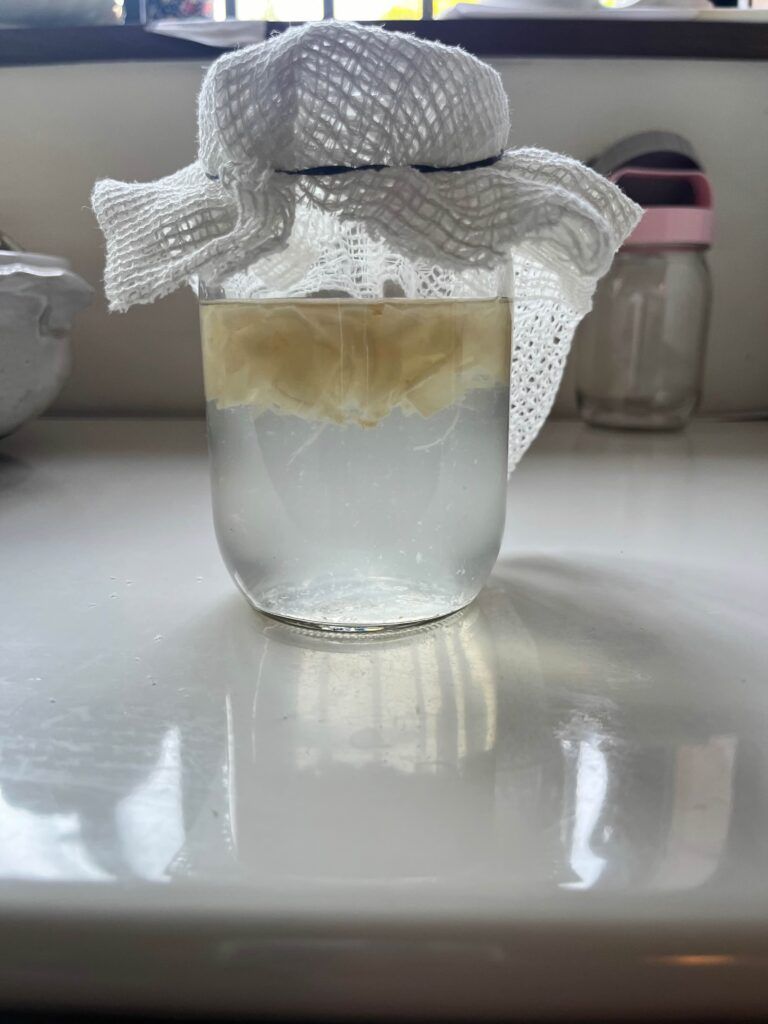




After this you will have a natural fizzy concoction that you can add to anything that has a bit of sugar to make it fizzy.
The ginger bug is not going to add much flavor to the tea but instead be used as the source for the honey in our recipes to eat away at to make the tea fizzy.
Warning: If the texture of your ginger bug is slimy and not watery or you notice mold growing at the top PLEASE throw away your ginger bug and start again it is not safe to consume if you notice these signs.
Why is it fizzy?
When ginger, water, and a sugar or carbohydrate like honey, white cane sugar, or even agave and other types sugars are combined and left to ferment over a couple of days the ginger eats away at the sugar and releases carbon dioxide resulting in little bubbles that makes the ginger bug fizzy and a natural ferment.
Why use honey?
I decided to use honey because I needed to add something to the tea that had glucose for the ginger bug to eat away at. I noticed that a lot of the time when homemade sodas were made the carbohydrate of choice was usually sugar and I wanted to make something that was still good for you even if it was carbonated.
All the recipes included use honey as a sweetener. You can use any sweetener you would like whether it’s sugar, agave, or any other sugar, Just use your replacement in the same amount. Please note that the final product will be less sweet and have little to no sweetness by the end of the process because of the ginger bug due to the amount of honey I decided to add to my recipes. I wanted the tea itself to shine through so I chose to add enough honey for the ginger bug to make the product fizzy.

Now that we have our ginger bug we can make our tea soda. I decided to make 7 different kinds of soda that have different teas used.
In the first recipe I will be using Hojicha which is a roasted green tea that has a nice roasted flavor and thought it would be a good tea to start off my soda making with as it is typically a welcome tea in Japan. You can learn more about Hojicha in The Magic of Hojicha.
Hojicha soda recipe:
Ingredients:
- Hojicha powder
- Hojicha Tea
- Honey
- Water
Items:
- Flip top bottle
- Measuring Cups
- Scale
- Tea pot
- Bowls
Recipe:
- Measure 18 grams of Hojicha and put into a teapot, add 280-300 ml of water at about boiling and brew for 30 seconds. Do this 2 times and set aside to cool.
- Combine 2 teaspoons of Hojicha powder with 85 grams of honey and set aside
- Once the tea is cooled down, combine the tea and honey mixture together.
- Note: We are adding honey to the recipe because the ginger bug needs a source to feed off of so that the drink can become fizzy.
- Pour 2 tablespoons of ginger bug into the bottle leaving about 1 inch of headspace at the top.
- Close the bottle and mix gently and let sit at room temperature for 24 hrs.
- Put into the fridge after 24 hrs until cold.
- Putting it in the fridge will calm the fizzyness a bit so that when you open it it will not rush out.
- Open over sink and Enjoy 😋
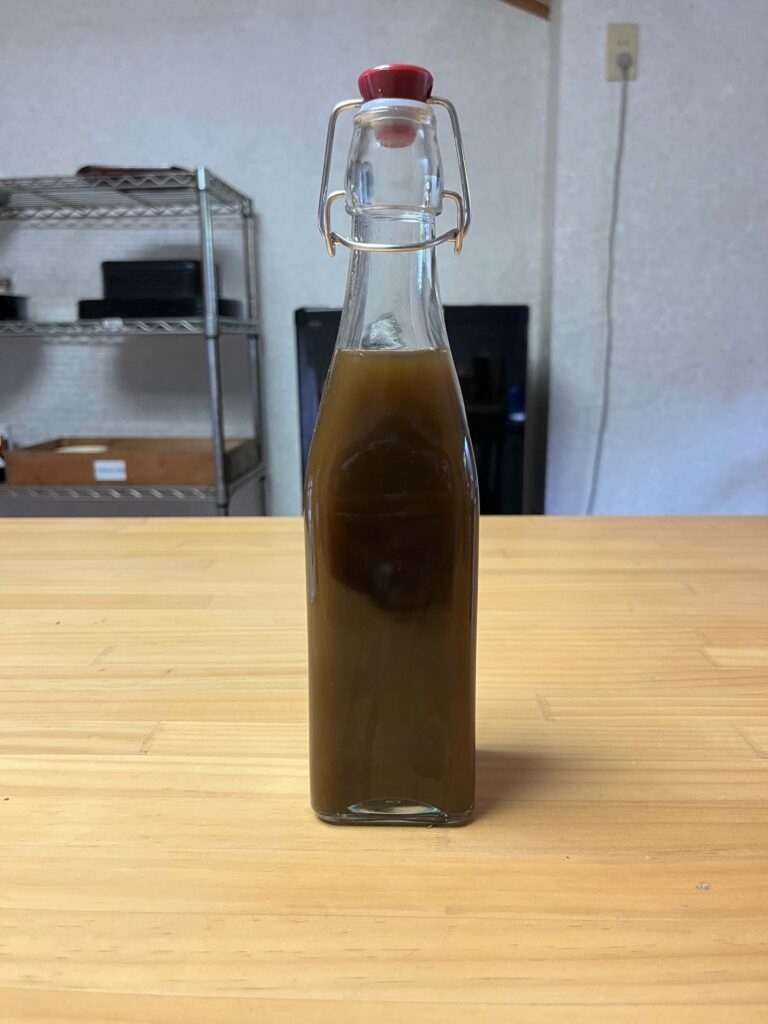
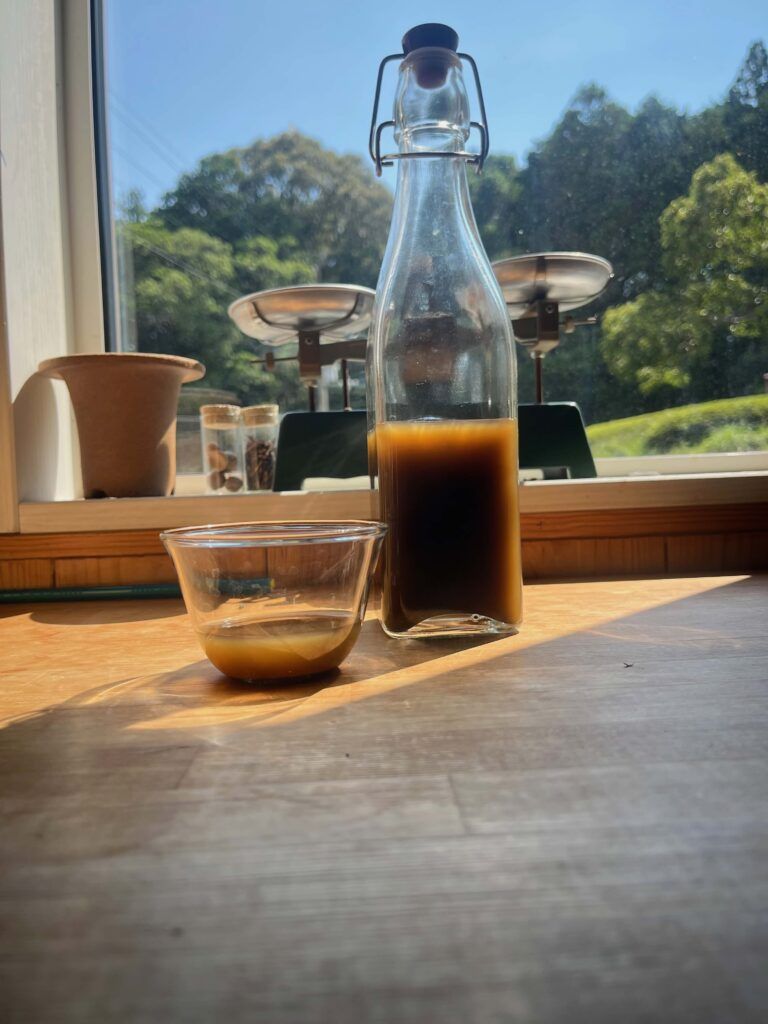
Thoughts:
I found this tea to be a bit strong in Hojicha flavor, I think this may be due to me adding Hojicha powder in addition to the Hojicha tea itself. It does have a nice roasted flavor and the sweetness is also nice. I think it tasted good overall and think it would be very tasty paired with something savory.
The rest of the Tea Sodas you will see in the following blog posts were different combinations I chose to play around with and thought were very tasty. During the course of these blog posts I decided to specialize on a specific tea with each soda. I used different green teas, Black tea/Roasted tea, and even some more specially made teas.
You can make whatever combinations you would like by the steps above. You can steep the tea however you would like or add whatever honey you want. I found specialty honeys while I was in Japan so some of the recipes use those different infused honeys. 😁
References:
https://www.yemoos.com/pages/ginger-beer-plant
https://fermentationadventure.com/ginger-bug-ginger-ale-fermented-drinks-questions-faqs/

